
In the tango steps there are many Argentine tango figures, but not a good tango is not necessarily characterized by many Argentine tango figures
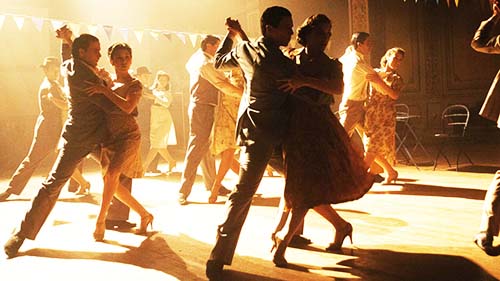
A good tango can also be danced with just an elegant walk, alternating with pauses that make it much more dense and intense, without the need to take many tango steps.

Tango Argentino Steps: The tango dance has never been codified, as it is a popular dance.
So we began to call the different tango steps and each of them was given a name if not to be able to remember them.
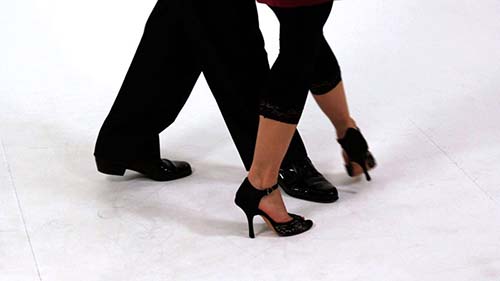
Argentine tango is much more than just a dance: it is a universal language made of steps, connections and improvisation. Every dancer, beginner or expert, goes through a unique journey in the discovery of this fascinating art. In this guide we will explore the fundamental steps and figures, adding practical advice and curiosities to enrich your dance experience.
The walk is the heart of Argentine tango. Simple in appearance, it requires a high level of attention to posture, connection with the partner and musicality. Walking in tango means getting in tune with the rhythm of the music and with the energy of your partner.
Also known as the basic sequence, it is composed of eight steps that form a reference structure for beginners. From here, many variations and combinations develop that allow you to personalize the dance.
One of the Argentine tango figures very didactic of six tango steps that draws a rectangle on the floor.
An elegant movement in which the dancer guides his partner to draw a figure eight with their feet. This step is the basis of many more advanced sequences and requires a great connection to be executed fluidly.
These circular movements are one of the distinctive characteristics of tango. The woman moves around the man performing a combination of forward, lateral and backward steps, while the man leads and maintains the center of the movement. 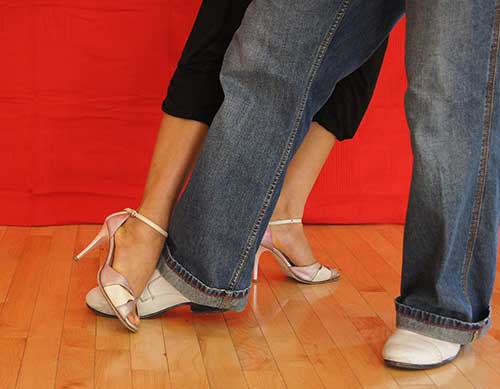
A movement in which the dancer enters the space of the partner, creating a visual effect of displacement. It is a dynamic figure that adds variety to the dance. There are high and low sacadas, in ballroom the low sacadas are usually used
This movement is a change of direction, involving a leg that is raised in the air in a fluid and controlled way. In this figure there are also low and high coleos. In milonga only Boleos basos are recommended so as not to endanger the other dancers.
A figure that creates a fascinating visual effect: one of the dancers "sweeps" the free foot of the partner, inducing them to move in a synchronized way.
These advanced movements imply a particular interaction with the center of gravity of the couple. In the Volcada, the bodies lean towards each other, while in the Colgada they lean outwards.
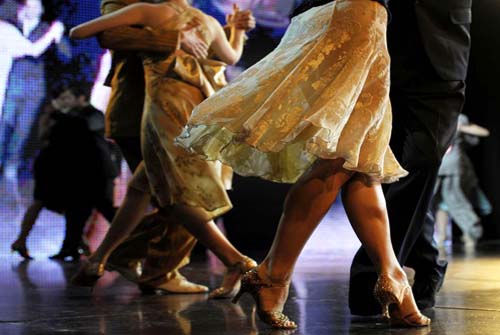
- Posture: Correct posture is essential to maintain balance and create a solid connection with your partner. Keep your chest high and your shoulders relaxed.
- Connection: Tango is a dance of communication. Pay attention to the embrace, which must be firm but not rigid.
- Musicality: Listen to the music to adapt the movements to the rhythm and energy of the song.
- Practice: Spend time practicing regularly, both individually and in pairs. This is a fundamental point in the path. Attending milongas and practices will help you develop confidence and adaptability.
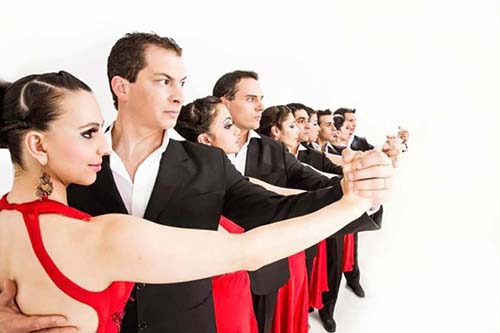
- The origins of the name: The term “tango” probably comes from ancient African rhythms and evolved as an expression of Argentine popular culture.
- Improvisation: One of the most fascinating characteristics of Argentine tango is improvisation. There are no fixed choreographies: each couple creates their own dance on the spot.
- Tango styles: There are different styles, such as Tango Salón, Tango Milonguero and Tango Nuevo, each with specific characteristics that influence steps and figures.
- Video tutorials: There are many online videos that show the basic and advanced steps, ideal for those who want to practice at home. You can always visit our YouTube channel where you will find interesting video clips, music and playlists of Argentine tango. https://www.youtube.com/@tango-allegria
- Workshops and lessons: Taking courses with expert teachers is the best way to perfect your technique and learn new figures.
- Recommended playlists: Listening to classic pieces such as those by Carlos Gardel or Osvaldo Pugliese can help you get into the spirit of tango. Visit our page dedicated to playlists where you will find the various links to the main digital platforms such as Spotify, YouTube, Amazon, etc. https://www.tangoallegria.it/tango-playlist
Dancing Tango in Rome |
Discover the Tango Allegria event closest to you.
|
Our Community |
Join our group and make new friends around the world. |
|
Seguici su
|
Tango and not only Tango |
Discover new passions organised by our Tango friends. |
Tango Allegria is the association that from the heart of Italy brings the passion for Argentine tango to the world, organizing unforgettable holidays, trips and events. If you love dancing, traveling, meeting new people and experiencing authentic emotions, you are in the right place.
Discover our tango holidays in exclusive locations: at the seaside, at the spa, in cities of art or in the middle of nature. Each experience combines tango, relaxation and fun.
Throughout the year we organize Argentine tango events with internationally renowned Argentine masters, intensive seminars, evening milongas, thematic courses and guided practices. Each event is an opportunity to improve your dance and share your passion in a welcoming and engaging environment.
With Tango Allegria you don't just experience tango, but also the beauty of the journey, the pleasure of wellbeing and the joy of meeting.
Our events are designed for everyone: beginners, intermediates and expert dancers.
📅 Upcoming Events• Tango in Finland – 1–6 October 2025• Buenos Aires Tango Tour – 17–28 November 2025• Ischia Tango Party – 30 April–3 May 2026 |
Do you want to stay updated on tango trips, special events, study weeks and exclusive offers?
Sign up for our newsletter and start living tango with us.
Since 2003 we have been bringing tango wherever there is a desire to get excited, learn and dance. We are waiting for you for a unique experience.